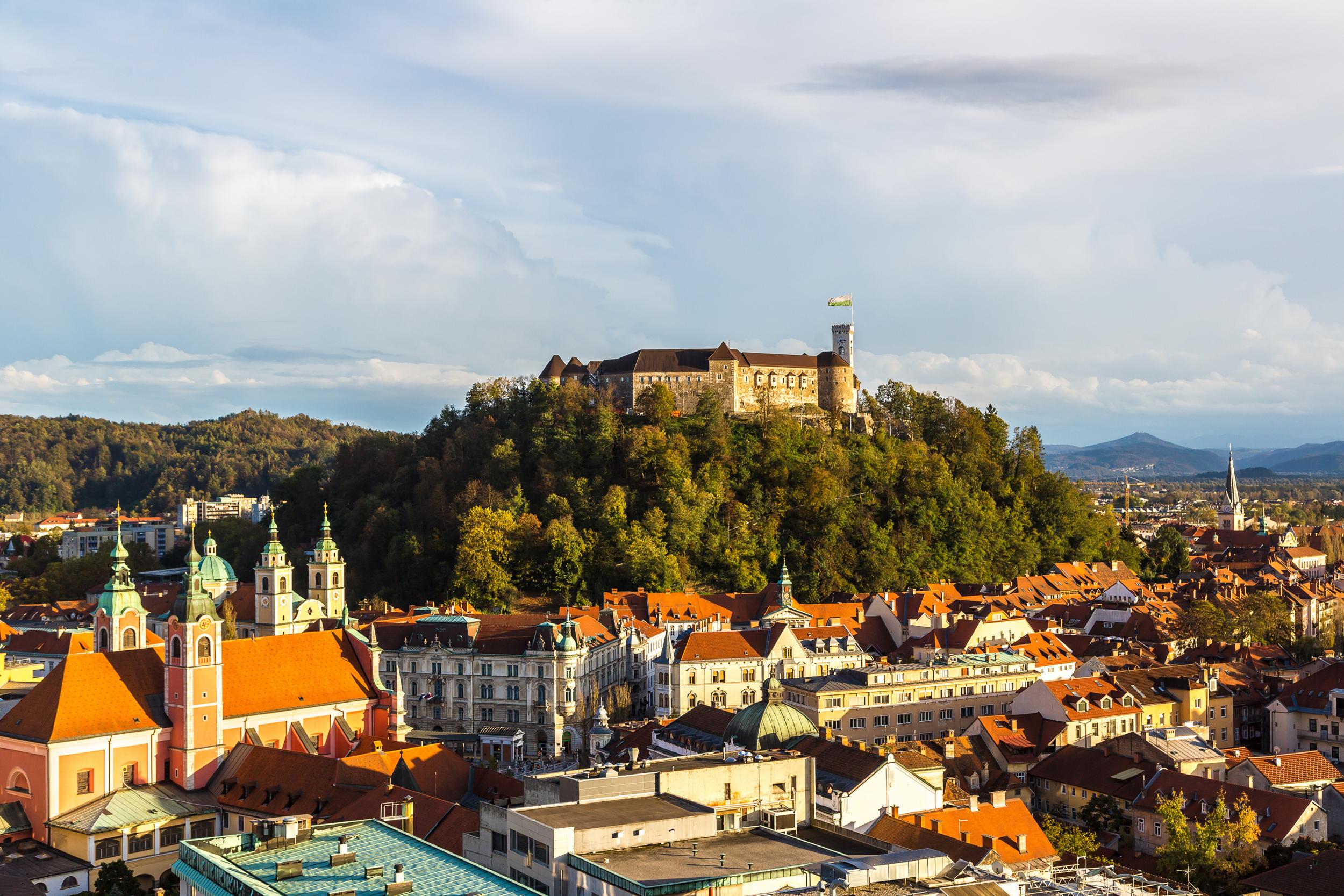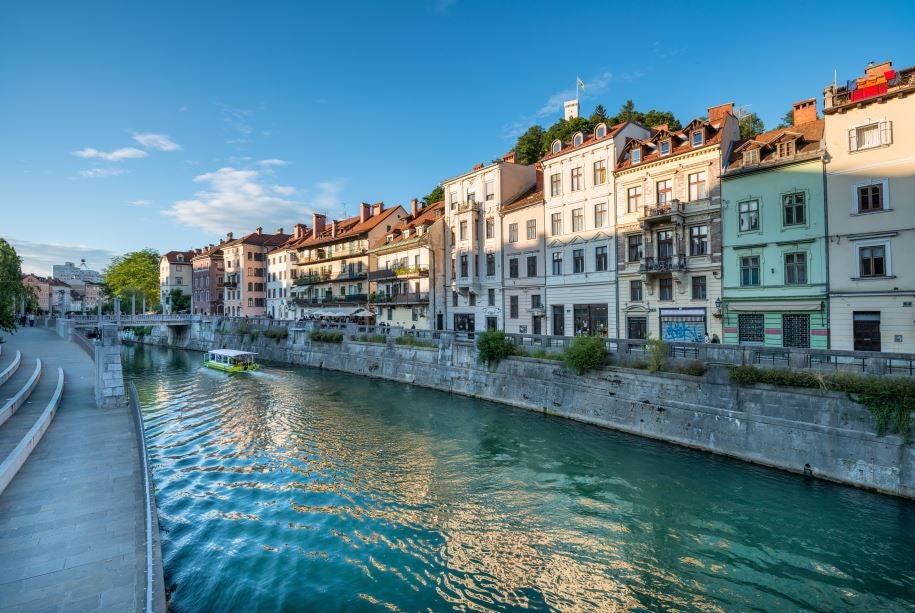The Independent's journalism is supported by our readers. When you purchase through links on our site, we may earn commission.
Ljubljana city guide: where to eat, drink and explore in the European Green Capital
The Slovenian capital is showing off its environmental credentials

Your support helps us to tell the story
From reproductive rights to climate change to Big Tech, The Independent is on the ground when the story is developing. Whether it's investigating the financials of Elon Musk's pro-Trump PAC or producing our latest documentary, 'The A Word', which shines a light on the American women fighting for reproductive rights, we know how important it is to parse out the facts from the messaging.
At such a critical moment in US history, we need reporters on the ground. Your donation allows us to keep sending journalists to speak to both sides of the story.
The Independent is trusted by Americans across the entire political spectrum. And unlike many other quality news outlets, we choose not to lock Americans out of our reporting and analysis with paywalls. We believe quality journalism should be available to everyone, paid for by those who can afford it.
Your support makes all the difference.The pace of life in Ljubljana’s compact Old Town feels several notches lower than in London. The cobbled streets are pedestrianised, meaning the gentle sound of footfall and conversation, rather than the grind of traffic, reverberates against facades. Occasionally an electric whir can be heard.
This summer will be the 25th since Slovenia declared independence from Yugoslavia, and Ljubljana, its capital, is European Green Capital 2016, having taken over the mantle from Bristol at the beginning of the year. That electric whir? That’ll be the Kavalirs, minibuses resembling golf carts, which have permission to drive on the fan cobbles of Mestni trg, the street running parallel to the River Ljubljanica, and are free of charge to use – just flag them down or call to be picked up (00 386 31 666 331). Cabins providing information about Ljubljana’s environmental initiatives – such as the BicikeLJ (bicikelj.si) bike share scheme, and the Library Under The Treetops, encouraging people to read outdoors - are popping up in the city throughout 2016.
Centuries of Habsburg rule ended in 1918 and many buildings bear similarities to those in neighbouring Austria. The city’s central points are the Town Hall, whose belfry sounds Beethoven’s "Ode to Joy", and a replica of the Robba Fountain - the original, alternatively known as the Fountain of the Three Rivers of Carniola, stands protected from erosion in the National Gallery of Slovenia’s lobby (see "Don't Miss", below).
A steep, signposted walking route meanders up from the Old Town to Ljubljana Castle (ljubljanskigrad.si), but if you’re not feeling quite so energetic you can take the glass-sided funicular from Krekov Square, close to the Central Market, where you can pick up Slovenian produce for a picnic.
The City Museum of Ljubljana (mgml.si), within Auersperg Palace, tells the story of the city and displays the world’s oldest wood wheel with an axel. The 5,200-year-old wheel was excavated from nearby marshes.
On fine evenings strolling along the riverside promenade, Petkovskovo nabrezje, takes you past a choice of bars and cafés with views of the octagonal dome and Baroque towers of the cathedral, plus seating beneath Ljubljana’s waterfront greenery.

UNPACK
The long-established Hotel Slon (hotelslon.com), was re-built during the 1930s and recently refurbished. It stands a couple of minutes’ walk from the riverside Preseren Square, site of a memorial to Slovenia’s national poet, France Preseren. Superior Deluxe rooms are spacious, with marble-floored bathrooms, while elsewhere there’s a spa and fitness centre and a smart restaurant serving refined Slovenian food and wine. Doubles from €119 a night, including breakfast.
THINK LOCAL
Despite its central location, it’s easy to miss the entrance of the compact Galerija Skuc (galerijaskuc.si); look out for an optician’s eye test-style sign. The contemporary art gallery opened in 1978 but remains a cutting-edge venue, hosting temporary exhibitions by Slovenian and international artists. Recent exhibitions have featured works by activists and artists including Ai Weiwei and Jacob Appelbaum. From 7 to 30 April the gallery’s director, Vladimir Vidmar, curates Logic of Collecting, an exhibition featuring works by four Slovenian artists.
EAT
Ljubljana is a central European city with both Germanic and Slavic influences, so the cuisine tends to be hearty. Pairs of garlic-laced, kranjska klobasa pork sausages served with bread and a dollop of mustard are a popular all-day snack, and mushroom soup appears on many menus. The local version of goulash tends to be less spicy than its Hungarian cousin and will give you plenty of energy for climbing the hill to the castle. A selection of traditional dishes is served at Druga Violina (facebook.com/drugaviolina), a welcoming restaurant with streetside tables and a vaulted dining room.
DRINK
The Pivnica (pivnica-union.si) pub and restaurant opened in 2014, adjacent to the Union brewery and beer museum (pivo-union.si). With exposed brickwork and long wooden tables, the interior is like a modern take on a German beer hall. There’s a touch of industrial chic too, with piping running along the high, black ceiling. The bar has 11 draught beers on tap, with tasting selections available. A half-litre of lager costs €2.20 but for just 30 cents extra it’s worth giving the unfiltered beer a go.
SPEND
Central Ljubljana is home to a smattering of design stores selling homeware and chic gifts created by Slovenian designers. Fox Boutique (foxboutique.si) stocks a range of cotton tote bags and T-shirts with cute prints, plus slogans in both Slovenian and English.
A few paces along, Gud Shop (gud-shop.com) is an ideal spot for smart but not overly expensive gifts.
DON’T MISS
An expansion of the National Gallery of Slovenia (ng-slo.si) was completed in January. The oldest part, Narodni Dom Palace, was refurbished and linked to the gallery’s other two sections. The collection ranges from medieval altarpieces and religious sculptures to modern artworks. Ivana Koblica’s late 19th-century painting, Summer, is one of the gallery’s best-loved pieces. The original Fountain of the Three Rivers of Carniola, sculpted in 1751 by Francesco Robba, stands near the café in the airy foyer, where the Slovene Philharmonic String Chamber Orchestra will be performing a series of evening concerts until 24 May.
TRAVEL ESSENTIALS
Getting there
easyJet (easyjet.com) operates direct flights from Stansted, and Wizz Air (wizzair.com) flies from Luton.
More information
Join our commenting forum
Join thought-provoking conversations, follow other Independent readers and see their replies
Comments